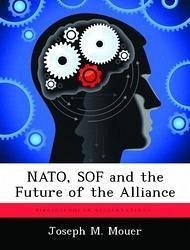NATO continues to transform itself from a Cold-War institution. Originally designed to defend Western Europe from a conventional attack from the Soviet Union, the alliance is now extending its operational reach well beyond the borders of Europe. The realization that security for the alliance is integrated in the global security environment was first realized during the wars in the former Yugoslavia. During this conflict, NATO's Cold War structure proved inadequate to address security issues that emanated from outside the alliance but impacted on its security. Although NATO began experimenting with organizational restructuring immediately after the fall of the Soviet Union, the Balkan crisis acted as a catalyst and pressured NATO into adopting the Combined Joint Task Force (CJTF) concept which provides NATO with greater operational flexibility. However, NATO is still primarily structured to conduct military operations against conventional nation-state entities as exemplified by the Allied Rapid Reaction Corps (ARRC), a corps-level reaction force. In order to successfully respond to the threats of the 21st Century, NATO will require adopting changes in its organizational structure. This monograph recommends that NATO complete earlier transformational efforts by incorporating Special Operations Forces (SOF) into its permanent organizational structure to meet current and future challenges. The monograph argues NATO's current relevancy is undermined by the lack of an organic SOF command and control headquarters at the strategic and operational levels. There is robust internal capacity at the tactical level within NATO; missing are the operational and strategic headquarters necessary to leverage that Special Operations capability to conduct unilateral or combined operations across all levels of war. Without the effort to create such an organization within NATO, the alliance will be unable to respond effectively to asymmetric threats originating from outside North America
Hinweis: Dieser Artikel kann nur an eine deutsche Lieferadresse ausgeliefert werden.
Hinweis: Dieser Artikel kann nur an eine deutsche Lieferadresse ausgeliefert werden.








